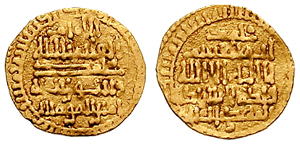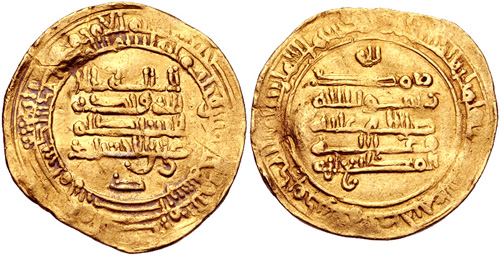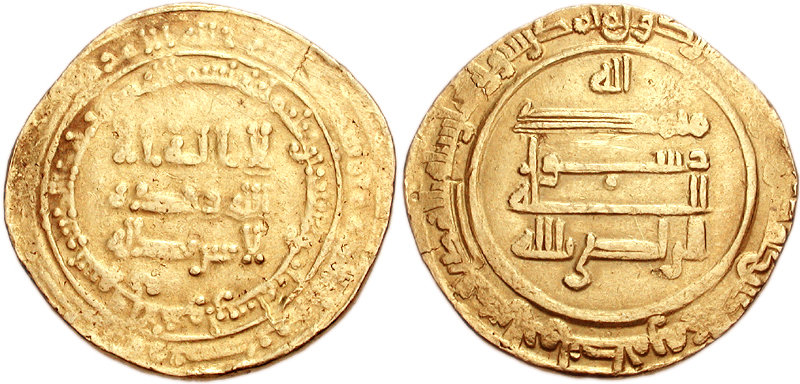|
Ikhshidids
The Ikhshidid dynasty (, ) was a Turkic mamluk dynasty who ruled Egypt and the Levant from 935 to 969. Muhammad ibn Tughj al-Ikhshid, a Turkic mamluk soldier, was appointed governor by the Abbasid Caliph al-Radi. The dynasty carried the Arabic title "Wāli" reflecting their position as governors on behalf of the Abbasids. The Ikhshidids came to an end when the Fatimid army conquered Fustat in 969. The Ikhshidid family tomb was in Jerusalem.Max Van BerchemMIFAO 44 - Matériaux pour un Corpus Inscriptionum Arabicarum Part 2 Syrie du Sud T.2 Jérusalem Haram (1927) p13-14 (no.146): “L’émir Muhammad mourut à Damas en 334 (946) et son corps fut transporté et inhumé à Jérusalem. L’émir Unūdjūr mourut en 349 (960) et son corps fut porté à Jérusalem et inhumé à côté de celui de son père. L’émir ‘Ali mourut en 355 (966) et son corps fut transporté à Jérusalem et inhumé à côté de ceux de son père et de son frère. Enfin l'ustādh Kāfūr mourut en 357 (96 ... [...More Info...] [...Related Items...] OR: [Wikipedia] [Google] [Baidu] |
Fatimid Conquest Of Egypt
The Fatimid conquest of Egypt took place in 969, as the troops of the Fatimid Caliphate under the general Jawhar captured Egypt, then ruled by the autonomous Ikhshidid dynasty in the name of the Abbasid Caliphate. The Fatimids launched repeated invasions of Egypt soon after coming to power in Ifriqiya (modern Tunisia and eastern Algeria) in 909, but failed against the still strong Abbasid Caliphate. By the 960s, however, while the Fatimids had consolidated their rule and grown stronger, the Abbasid Caliphate had collapsed, and the Ikhshidid regime was facing prolonged crisis: foreign raids and a severe famine were compounded by the death in 968 of the strongman Abu al-Misk Kafur. The resulting power vacuum led to open infighting among the various factions in Fustat, the capital of Egypt. The atmosphere of crisis was deepened by the simultaneous advances of the Byzantine Empire against the Muslim states of the Eastern Mediterranean. Meanwhile, Fatimid agents operated openly in Egyp ... [...More Info...] [...Related Items...] OR: [Wikipedia] [Google] [Baidu] |
Fatimid
The Fatimid Caliphate was an Ismaili Shi'a caliphate extant from the tenth to the twelfth centuries AD. Spanning a large area of North Africa, it ranged from the Atlantic Ocean in the west to the Red Sea in the east. The Fatimids, a dynasty of Arab origin, trace their ancestry to Muhammad's daughter Fatima and her husband ‘Ali b. Abi Talib, the first Shi‘a imam. The Fatimids were acknowledged as the rightful imams by different Isma‘ili communities, but also in many other Muslim lands, including Persia and the adjacent regions. Originating during the Abbasid Caliphate, the Fatimids conquered Tunisia and established the city of " al-Mahdiyya" ( ar, المهدية). The Ismaili dynasty ruled territories across the Mediterranean coast of Africa and ultimately made Egypt the center of the caliphate. At its height, the caliphate included – in addition to Egypt – varying areas of the Maghreb, Sudan, Sicily, the Levant, and the Hijaz. Between 902 to 909 the foundat ... [...More Info...] [...Related Items...] OR: [Wikipedia] [Google] [Baidu] |
Abu'l-Misk Kafur
Abu al-Misk Kafur () (905–968), also called al-Laithi, al-Suri, al-Labi was a dominant personality of Ikhshidid Egypt and Syria."Kāfūr, Abu'l Misk al-Ikhsidi." ''E.J. Brill's first encyclopaedia of Islam 1913-1936''. Edited by: M. Th. Houtsma, E. van Donzel. Brill, 1993. p. 623 Originally a black slave, probably from Nubia, he was made vizier of Egypt, becoming its ''de facto'' ruler from 946 after the death of his master, Muhammad bin Tughj. Thereafter, he ruled the Ikshidid domains—Egypt and southern Syria (including Damascus)—until his death in 968.Abū al-Misk Kāfūr." Encyclopædia Britannica. 2008. Encyclopædia Britannica Online. Jul. 2008 Biography Kafur is described by the sources variously as coming from Abyssinia (Ethiopia), the Bilad al-Sudan (Land of the Blacks) or Nubia, the latter being the most probable. Muhammad ibn Tughj, the founder of the Ikhshidid dynasty of Egypt, purchased him as a slave in 923. He is recorded as having a dark complexion and be ... [...More Info...] [...Related Items...] OR: [Wikipedia] [Google] [Baidu] |
Abbasid Caliphate
The Abbasid Caliphate ( or ; ar, الْخِلَافَةُ الْعَبَّاسِيَّة, ') was the third caliphate to succeed the Islamic prophet Muhammad. It was founded by a dynasty descended from Muhammad's uncle, Abbas ibn Abdul-Muttalib (566–653 CE), from whom the dynasty takes its name. They ruled as caliphs for most of the caliphate from their capital in Baghdad in modern-day Iraq, after having overthrown the Umayyad Caliphate in the Abbasid Revolution of 750 CE (132 AH). The Abbasid Caliphate first centered its government in Kufa, modern-day Iraq, but in 762 the caliph Al-Mansur founded the city of Baghdad, near the ancient Babylonian capital city of Babylon. Baghdad became the center of science, culture and invention in what became known as the Golden Age of Islam. This, in addition to housing several key academic institutions, including the House of Wisdom, as well as a multiethnic and multi-religious environment, garnered it a worldwide reputation as the ... [...More Info...] [...Related Items...] OR: [Wikipedia] [Google] [Baidu] |
Abu'l-Hasan Ali Ibn Al-Ikhshid
Abu'l-Hasan Ali ibn al-Ikhshid ( ar, أبو الحسن علي بن الإخشيد) was the third ruler of the autonomous Ikhshidid dynasty, which ruled Egypt, Syria and the Hejaz for the Abbasid Caliphate. He reigned for six years, between 960-966 CE. He was a younger son of the dynasty's founder, Muhammad ibn Tughj al-Ikhshid, and reigned from the death of his elder brother Unujur in 961. Actual power throughout his reign was held by the capable black eunuch Abu'l-Misk Kafur. The main events of his reign were a Nubian invasion in 963, as well as a resurgence of Bedouin unrest and raids both in the Western Desert and in the Syrian Desert, in the latter case accompanied by the reappearance of the Qarmatians. Anti-Christian riots were provoked by a defeat of the Ikhshidid fleet against the Byzantine navy in 960/963, as well as the Byzantine offensives under Nikephoros Phokas in Cilicia and northern Syria. Ali died in January 966, and was buried in Jerusalem next to his father and b ... [...More Info...] [...Related Items...] OR: [Wikipedia] [Google] [Baidu] |
Abbasids
The Abbasid Caliphate ( or ; ar, الْخِلَافَةُ الْعَبَّاسِيَّة, ') was the third caliphate to succeed the Islamic prophet Muhammad. It was founded by a dynasty descended from Muhammad's uncle, Abbas ibn Abdul-Muttalib (566–653 CE), from whom the dynasty takes its name. They ruled as caliphs for most of the caliphate from their capital in Baghdad in modern-day Iraq, after having overthrown the Umayyad Caliphate in the Abbasid Revolution of 750 CE (132 AH). The Abbasid Caliphate first centered its government in Kufa, modern-day Iraq, but in 762 the caliph Al-Mansur founded the city of Baghdad, near the ancient Babylonian capital city of Babylon. Baghdad became the center of science, culture and invention in what became known as the Golden Age of Islam. This, in addition to housing several key academic institutions, including the House of Wisdom, as well as a multiethnic and multi-religious environment, garnered it a worldwide reputation as the ... [...More Info...] [...Related Items...] OR: [Wikipedia] [Google] [Baidu] |
Abu'l-Fawaris Ahmad Ibn Ali
Abu'l-Fawaris Ahmad ibn Ali ibn al-Ikhshid ( ar, أبو الفوارس أحمد بن علي بن الإخشيد) was the last monarch of the autonomous Ikhshidid dynasty, which ruled Egypt, Syria and the Hejaz, from 968 to 969. However, he was a child and did not exercise actual rule, being instead under the tutelage first of the vizier Ja'far ibn al-Furat and then of his uncle al-Hasan ibn Ubayd Allah ibn Tughj. His reign ended with the conquest of Egypt by the Fatimids in summer 969. Life Ahmad was the son of the third Ikhshidid ruler, Abu'l-Hasan Ali ibn al-Ikhshid, and grandson of the dynasty's founder, Muhammad ibn Tughj al-Ikhshid. When his father Ali died in January 966, he was only ten; consequently, the powerful Abu'l-Misk Kafur, who had long been the virtual ruler of the state, assumed the reins of power himself. Ahmad succeeded to the throne after Kafur's death in April 968, but the situation in Egypt was critical: the vizier Ja'far ibn al-Furat tried to control the g ... [...More Info...] [...Related Items...] OR: [Wikipedia] [Google] [Baidu] |
Abu'l-Qasim Unujur Ibn Al-Ikhshid
Abu'l-Qasim Unujur ibn al-Ikhshid ( ar, أبو القاسم أنوجور بن الإخشيد) was the second ruler of the Ikhshidid dynasty, which ruled Medieval Egypt, Egypt, Bilad al-Sham, Syria and the Hejaz under the suzerainty of the Abbasid Caliphate but ''de facto'' autonomous. Unujur ruled from 946 to 960, but much of the actual power was held by the black eunuch Abu'l-Misk Kafur. Unujur died in 960 CE, and was buried in Jerusalem next to his father, at a location close to the Gate of the Tribes on the Temple Mount. References Sources * 961 deaths Year of birth unknown Ikhshidids 10th-century rulers in Africa 10th-century rulers in Asia Ikhshidid emirs {{Asia-royal-stub ... [...More Info...] [...Related Items...] OR: [Wikipedia] [Google] [Baidu] |
Turkic Peoples
The Turkic peoples are a collection of diverse ethnic groups of West, Central, East, and North Asia as well as parts of Europe, who speak Turkic languages.. "Turkic peoples, any of various peoples whose members speak languages belonging to the Turkic subfamily...". "The Turkic peoples represent a diverse collection of ethnic groups defined by the Turkic languages." According to historians and linguists, the Proto-Turkic language originated in Central-East Asia region, potentially in Mongolia or Tuva. Initially, Proto-Turkic speakers were potentially both hunter-gatherers and farmers, but later became nomadic pastoralists. Early and medieval Turkic groups exhibited a wide range of both East Asian and West-Eurasian physical appearances and genetic origins, in part through long-term contact with neighboring peoples such as Iranian, Mongolic, Tocharians, Yeniseian people, and others."Some DNA tests point to the Iranian connections of the Ashina and Ashide,133 highlighti ... [...More Info...] [...Related Items...] OR: [Wikipedia] [Google] [Baidu] |
Mamluk
Mamluk ( ar, مملوك, mamlūk (singular), , ''mamālīk'' (plural), translated as "one who is owned", meaning " slave", also transliterated as ''Mameluke'', ''mamluq'', ''mamluke'', ''mameluk'', ''mameluke'', ''mamaluke'', or ''marmeluke'') is a term most commonly referring to non-Arab, ethnically diverse (mostly Southern Russian, Turkic, Caucasian, Eastern and Southeastern European) slave-soldiers and freed slaves who were assigned military and administrative duties, serving the ruling Arab dynasties in the Muslim world. The most enduring Mamluk realm was the knightly military class in Egypt in the Middle Ages, which developed from the ranks of slave-soldiers. Originally the Mamluks were slaves of Turkic origin from the Eurasian Steppe, but the institution of military slavery spread to include Circassians, Abkhazians, Georgians,"Relations of the Georgian Mamluks of Egypt with Their Homeland in the Last Decades of the Eighteenth Century". Daniel Crecelius and Gotcha ... [...More Info...] [...Related Items...] OR: [Wikipedia] [Google] [Baidu] |
Jerusalem
Jerusalem (; he, יְרוּשָׁלַיִם ; ar, القُدس ) (combining the Biblical and common usage Arabic names); grc, Ἱερουσαλήμ/Ἰεροσόλυμα, Hierousalḗm/Hierosóluma; hy, Երուսաղեմ, Erusałēm. is a city in Western Asia. Situated on a plateau in the Judaean Mountains between the Mediterranean Sea, Mediterranean and the Dead Sea, it is one of the List of oldest continuously inhabited cities, oldest cities in the world and is considered to be a holy city for the three major Abrahamic religions: Judaism, Christianity, and Islam. Both Israelis and Palestinians claim Jerusalem as their Capital city, capital, as Israel maintains its primary governmental institutions there and the State of Palestine ultimately foresees it as its seat of power. Because of this dispute, Status of Jerusalem, neither claim is widely recognized internationally. Throughout History of Jerusalem, its long history, Jerusalem has been destroyed at least twice, Sie ... [...More Info...] [...Related Items...] OR: [Wikipedia] [Google] [Baidu] |
Al-Radi
Abu'l-Abbas Ahmad (Muhammad) ibn Ja'far al-Muqtadir ( ar, أبو العباس أحمد (محمد) بن جعفر المقتدر, Abū al-ʿAbbās Aḥmad (Muḥammad) ibn al-Muqtadir; December 909 – 23 December 940), usually simply known by his regnal name al-Radi bi'llah ( ar, الراضي بالله, al-Rāḍī bi'llāh, Content with God), was the twentieth Caliph of the Abbasid Caliphate, reigning from 934 to his death. He died on 23 December 940 at the age of 31. His reign marked the end of the caliph's political power and the rise of military strongmen, who competed for the title of . Early life The future al-Radi was born on 20 December 909, to the caliph al-Muqtadir () and a Greek-born slave concubine named Zalum. At the age of four, he received the nominal governorship of Egypt and the Maghreb, and was sent with the commander-in-chief Mu'nis al-Muzaffar to Egypt, who became his tutor. When Mu'nis and al-Muqtadir fell out in 927, Abu'l-Abbas and the vizier Ibn Muqla tr ... [...More Info...] [...Related Items...] OR: [Wikipedia] [Google] [Baidu] |



.jpg)






